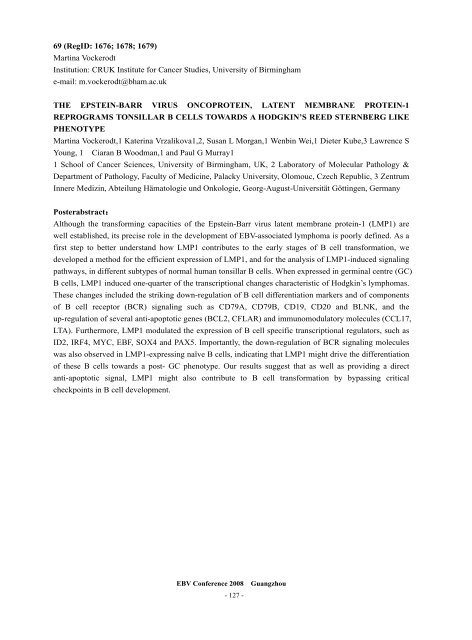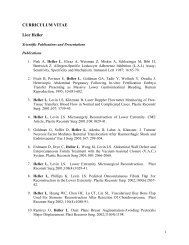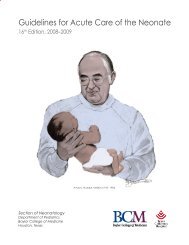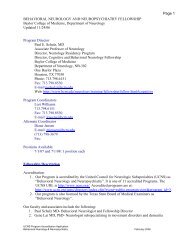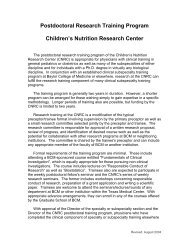EBV Conference 2008 Guangzhou - Baylor College of Medicine
EBV Conference 2008 Guangzhou - Baylor College of Medicine
EBV Conference 2008 Guangzhou - Baylor College of Medicine
Create successful ePaper yourself
Turn your PDF publications into a flip-book with our unique Google optimized e-Paper software.
69 (RegID: 1676; 1678; 1679)<br />
Martina Vockerodt<br />
Institution: CRUK Institute for Cancer Studies, University <strong>of</strong> Birmingham<br />
e-mail: m.vockerodt@bham.ac.uk<br />
THE EPSTEIN-BARR VIRUS ONCOPROTEIN, LATENT MEMBRANE PROTEIN-1<br />
REPROGRAMS TONSILLAR B CELLS TOWARDS A HODGKIN’S REED STERNBERG LIKE<br />
PHENOTYPE<br />
Martina Vockerodt,1 Katerina Vrzalikova1,2, Susan L Morgan,1 Wenbin Wei,1 Dieter Kube,3 Lawrence S<br />
Young, 1 Ciaran B Woodman,1 and Paul G Murray1<br />
1 School <strong>of</strong> Cancer Sciences, University <strong>of</strong> Birmingham, UK, 2 Laboratory <strong>of</strong> Molecular Pathology &<br />
Department <strong>of</strong> Pathology, Faculty <strong>of</strong> <strong>Medicine</strong>, Palacky University, Olomouc, Czech Republic, 3 Zentrum<br />
Innere Medizin, Abteilung Hämatologie und Onkologie, Georg-August-Universität Göttingen, Germany<br />
Posterabstract:<br />
Although the transforming capacities <strong>of</strong> the Epstein-Barr virus latent membrane protein-1 (LMP1) are<br />
well established, its precise role in the development <strong>of</strong> <strong>EBV</strong>-associated lymphoma is poorly defined. As a<br />
first step to better understand how LMP1 contributes to the early stages <strong>of</strong> B cell transformation, we<br />
developed a method for the efficient expression <strong>of</strong> LMP1, and for the analysis <strong>of</strong> LMP1-induced signaling<br />
pathways, in different subtypes <strong>of</strong> normal human tonsillar B cells. When expressed in germinal centre (GC)<br />
B cells, LMP1 induced one-quarter <strong>of</strong> the transcriptional changes characteristic <strong>of</strong> Hodgkin’s lymphomas.<br />
These changes included the striking down-regulation <strong>of</strong> B cell differentiation markers and <strong>of</strong> components<br />
<strong>of</strong> B cell receptor (BCR) signaling such as CD79A, CD79B, CD19, CD20 and BLNK, and the<br />
up-regulation <strong>of</strong> several anti-apoptotic genes (BCL2, CFLAR) and immunomodulatory molecules (CCL17,<br />
LTA). Furthermore, LMP1 modulated the expression <strong>of</strong> B cell specific transcriptional regulators, such as<br />
ID2, IRF4, MYC, EBF, SOX4 and PAX5. Importantly, the down-regulation <strong>of</strong> BCR signaling molecules<br />
was also observed in LMP1-expressing naïve B cells, indicating that LMP1 might drive the differentiation<br />
<strong>of</strong> these B cells towards a post- GC phenotype. Our results suggest that as well as providing a direct<br />
anti-apoptotic signal, LMP1 might also contribute to B cell transformation by bypassing critical<br />
checkpoints in B cell development.<br />
<strong>EBV</strong> <strong>Conference</strong> <strong>2008</strong> <strong>Guangzhou</strong><br />
- 127 -


